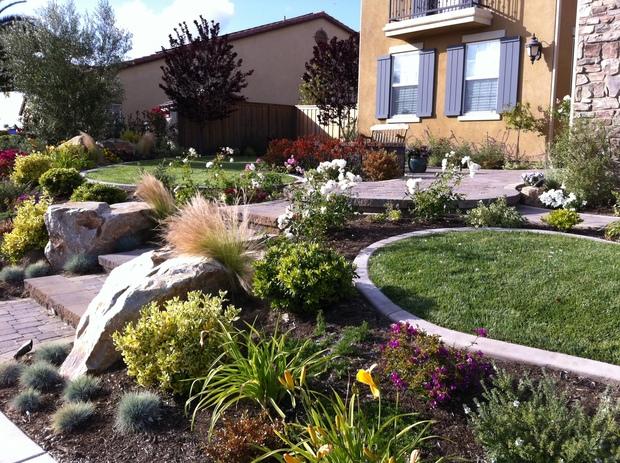Not known Factual Statements About Landscapers
Not known Factual Statements About Landscapers
Blog Article
Landscapers - The Facts
Table of ContentsEverything about LandscapersAll about LandscapersThe Only Guide to LandscapersFascination About LandscapersAll About LandscapersSome Known Details About Landscapers
- A garden feature where water is represented by an aggregate rock product, generally a gravel or granite.- A rock or flagstone patio area, path, or walkway developed without a concrete base.- A stone preserving or free standing wall surface built without the use of mortar. - A below ground framework that collect water and permits it to reduce percolate right into the dirt around it.
Landscape style that is compatible with a sites' setting in both look and sustainability without negative impacts to the atmosphere. Edging in the landscape is a line of separation that creates visual rate of interest in the yard by separating one sector from an additional segment.
Locations can additionally have a feeling of "room" supplied by trees, other growings, fences, or screens. The landscape near the entrance to a structure. A tree, bush or creeping plant, educated to grow on a wall surface or fencing into a details pattern. Especially useful for fruit trees, making it easy to collect the fruit and containing mess.
The Facts About Landscapers Revealed

The aspect in a landscape layout or area in a landscape that is meant to be most noticeable. The prime focus can be a plant, stone, statuary, collecting space, or other landscape attribute. A design of gardens or yard aspects that worry straight lines, appropriate angles and circles. Bushes or bushes situated in beds near the foundation of a home or other structure.

Fascination About Landscapers
Rock item, either rounded or fractured, that is reasonably small- normally 1" or less. Low plants that are allowed or encouraged to top a location. Can refer to any "difficult" garden components including statuary or rocks however many typically is made use of to refer to courses, patios, and walls.: Elevation difference in between the degree of water in a fish pond (or the level of the pump if it sits outside the fish pond) and the top electrical outlet of water which affects performance of the water pump in gph (gallons per hour). Thick hedges or trees that click for more create a fence, screen, or limit.
Fencing boards that run flat, frequently utilized in contemporary or Japanese-inspired landscape layouts. Appropriate use of fictional lines can help the landscape really feel linked to the home and other aspects.
Conventional PNW landscapes are casual. A plant that spreads out even more than wanted, or right into habitats where it does damage.
The 10-Second Trick For Landscapers
Can consist of head placements and protection, pipe sizing, GPM specs, and products needed to mount this system. Certified expert that creates landscapes, coached in engineering and design as well as in cultivation.
The expert that prepares and develops landscape projects, normally at a residential or tiny industrial degree with the major design catalyst on plantings. Landscape designers generally have less education than Landscape Architects and are not certified. A completed landscape layout, outlining all elements for the brand-new landscape. This typically takes the kind of an illustration theoretically.
Using numerous plantings of the exact same range to fill up in an area in the landscape. This can decrease maintenance and water usage in the yard.
A mix of cement, sand, and water that is utilized in rock stonework for setting rocks and joints. A layer of compost or bark dust other used at the base of a plant. A mass growing of moss. A plant that was present in a geographic place prior to individuals started changing the landscape.
Landscapers Fundamentals Explained
Exactly how the garden or a yard component is set up in relationship to an existing or brand-new function or to an instructions. Lawns that are not trimmed yet grown in landscapes as perennials.

Plants that give seasonal passion and then die back in the winter months. Cold season yard that is the most typical turf lawn in Portland, OR and the rest of the PNW.An open roofed structure over an outdoor patio or other landscape attribute.
Basalt aggregate ranging in size from 1/4" down to dirt. One of the most typical landscape crushed rock in the PNW. Location of the landscape designed to take care of water till it can soak into the ground. A chain that manages water as it travels from a roof covering gutter to the ground. Yard framework that produces a growing area that is had and greater than why not find out more the bordering quality.
Creating a garden feature being composed mostly of stones with growings that complement and can grow in the rocky setting. Sprinkler head style that turns a stream of water throughout an area.
Landscapers - Questions

Report this page